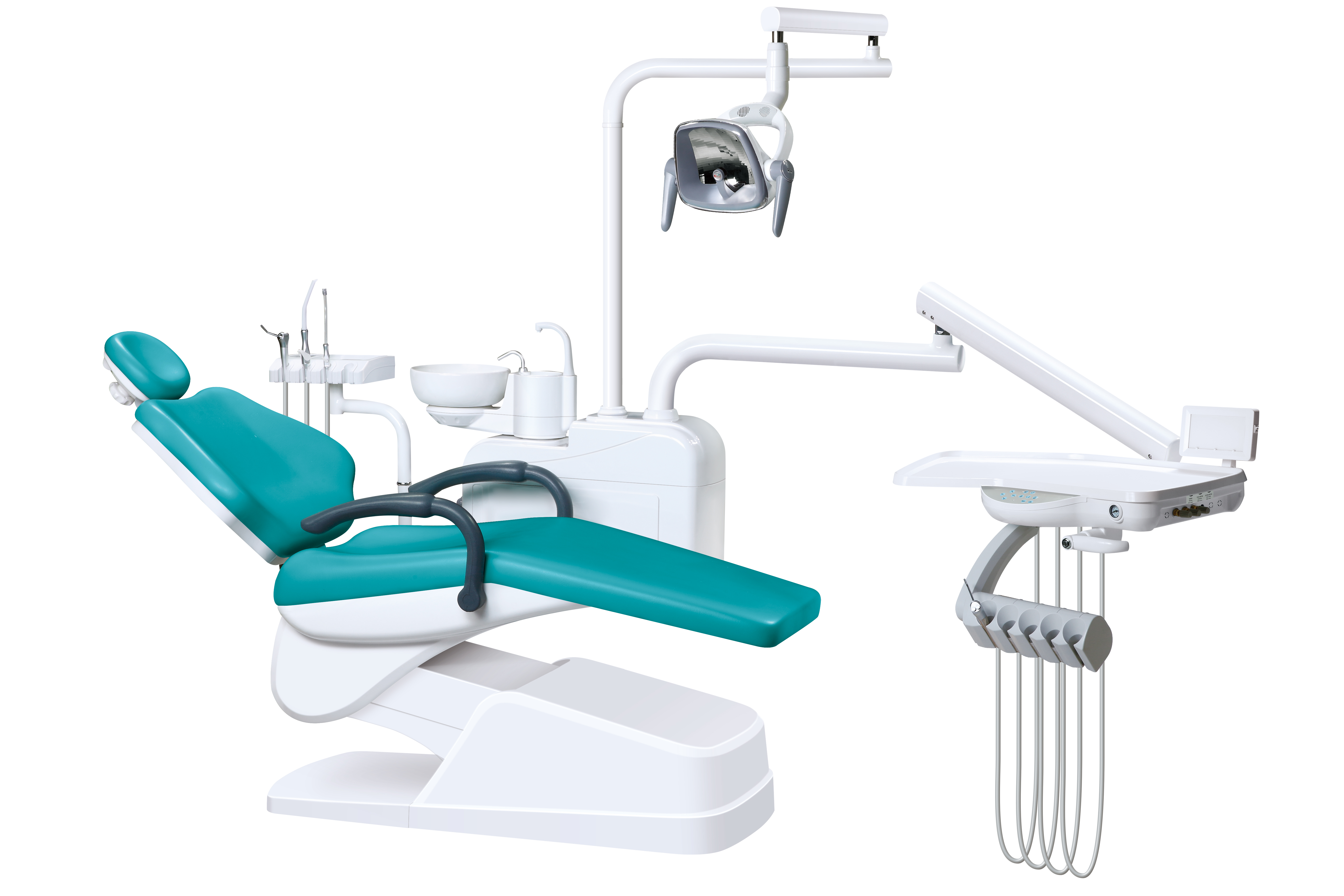Dental Chair Unit Parts: Essential Components for Optimal Patient Care
Dental chair units are pivotal pieces of equipment in any dental practice, facilitating efficient and comfortable patient care. Understanding the intricacies of dental chair unit parts is essential for dental professionals seeking to optimize their clinical setup and patient experience.
Chair Base and Frame: The base of a dental chair unit typically consists of a sturdy metal framework that supports the entire structure. This base is engineered to ensure stability and durability during patient treatments, with some models incorporating hydraulic or electric mechanisms for height adjustment and reclining functions.
Upholstery and Padding: The upholstery of a dental chair plays a crucial role in patient comfort. High-quality materials like synthetic leather or vinyl cover the chair, often padded with foam or memory foam, for optimal support and cushioning during lengthy procedures.
Armrests and Headrests: Ergonomically designed armrests and a fully adjustable headrest contribute significantly to patient relaxation and proper positioning. These components are engineered to offer stability and adaptability, accommodating patients of varying sizes comfortably.
High-speed Handpieces: Dental handpieces are crucial tools for various procedures like drilling and polishing. The dental chair unit integrates a delivery system that provides convenient access to these handpieces, ensuring efficiency and workflow optimization.
Saliva Ejectors and Suction Units: Managing oral fluids during procedures is essential for maintaining a clean and dry operating field. Dental chair units incorporate efficient saliva ejectors and suction units to remove excess fluids, enhancing visibility and patient comfort.
Air-Water Syringes: These syringes deliver controlled streams of air and water, essential for rinsing and drying during dental treatments. Integrated into the dental chair's delivery system, air-water syringes enable precise application and rapid response.
Control Panel and Foot Pedals: Dental professionals can manage chair positioning, instrument operation, and other functions through intuitive control panels and foot pedals. These interfaces offer quick access to essential settings, minimizing disruptions during treatments.
Patient Chair Adjustment Mechanisms: The patient chair's adjustment mechanisms allow for precise positioning, enabling optimal access for dental procedures while ensuring patient comfort and safety throughout the appointment.
Integrated Imaging Systems: Some advanced dental chair units feature integrated imaging systems like intraoral cameras or digital radiography equipment. These systems provide real-time visual feedback and diagnostic capabilities, contributing to enhanced treatment planning and patient education.
Cleaning and Sterilization: Routine cleaning and sterilization of chair surfaces, upholstery, and instrument delivery systems are essential for infection control and patient safety.
Regular Servicing and Calibration: Scheduled servicing by qualified technicians helps maintain optimal functionality and performance of dental chair unit parts. Calibration of electronic components ensures accuracy and reliability during dental procedures.
Troubleshooting Common Issues: Being familiar with troubleshooting techniques for common chair unit issues like hydraulic malfunctions or electrical faults enables quick resolution and minimizes treatment interruptions.
Introduction to Dental Chair Unit Parts
In the realm of modern dentistry, dental chair units are indispensable tools that combine functionality, ergonomics, and technology to support various dental procedures. A dental chair unit serves as the central component of a dental operatory, providing the necessary support and positioning for both the dental professional and the patient. These units are meticulously designed to accommodate a range of essential components and features that enhance treatment precision and patient comfort.Key Components of a Dental Chair Unit
The foundational elements of a dental chair unit encompass its structural integrity and patient comfort features.Chair Base and Frame: The base of a dental chair unit typically consists of a sturdy metal framework that supports the entire structure. This base is engineered to ensure stability and durability during patient treatments, with some models incorporating hydraulic or electric mechanisms for height adjustment and reclining functions.
Upholstery and Padding: The upholstery of a dental chair plays a crucial role in patient comfort. High-quality materials like synthetic leather or vinyl cover the chair, often padded with foam or memory foam, for optimal support and cushioning during lengthy procedures.
Armrests and Headrests: Ergonomically designed armrests and a fully adjustable headrest contribute significantly to patient relaxation and proper positioning. These components are engineered to offer stability and adaptability, accommodating patients of varying sizes comfortably.
Instrument Delivery System
The instrument delivery system of a dental chair unit comprises sophisticated tools that aid dental professionals in delivering precise treatments.High-speed Handpieces: Dental handpieces are crucial tools for various procedures like drilling and polishing. The dental chair unit integrates a delivery system that provides convenient access to these handpieces, ensuring efficiency and workflow optimization.
Saliva Ejectors and Suction Units: Managing oral fluids during procedures is essential for maintaining a clean and dry operating field. Dental chair units incorporate efficient saliva ejectors and suction units to remove excess fluids, enhancing visibility and patient comfort.
Air-Water Syringes: These syringes deliver controlled streams of air and water, essential for rinsing and drying during dental treatments. Integrated into the dental chair's delivery system, air-water syringes enable precise application and rapid response.
Operating Controls and Electronics
Modern dental chair units are equipped with advanced controls and electronic features that streamline treatment processes and enhance workflow efficiency.Control Panel and Foot Pedals: Dental professionals can manage chair positioning, instrument operation, and other functions through intuitive control panels and foot pedals. These interfaces offer quick access to essential settings, minimizing disruptions during treatments.
Patient Chair Adjustment Mechanisms: The patient chair's adjustment mechanisms allow for precise positioning, enabling optimal access for dental procedures while ensuring patient comfort and safety throughout the appointment.
Integrated Imaging Systems: Some advanced dental chair units feature integrated imaging systems like intraoral cameras or digital radiography equipment. These systems provide real-time visual feedback and diagnostic capabilities, contributing to enhanced treatment planning and patient education.
Maintenance and Upkeep of Dental Chair Units
To ensure the longevity and performance of dental chair units, regular maintenance and upkeep are imperative.Cleaning and Sterilization: Routine cleaning and sterilization of chair surfaces, upholstery, and instrument delivery systems are essential for infection control and patient safety.
Regular Servicing and Calibration: Scheduled servicing by qualified technicians helps maintain optimal functionality and performance of dental chair unit parts. Calibration of electronic components ensures accuracy and reliability during dental procedures.
Troubleshooting Common Issues: Being familiar with troubleshooting techniques for common chair unit issues like hydraulic malfunctions or electrical faults enables quick resolution and minimizes treatment interruptions.


